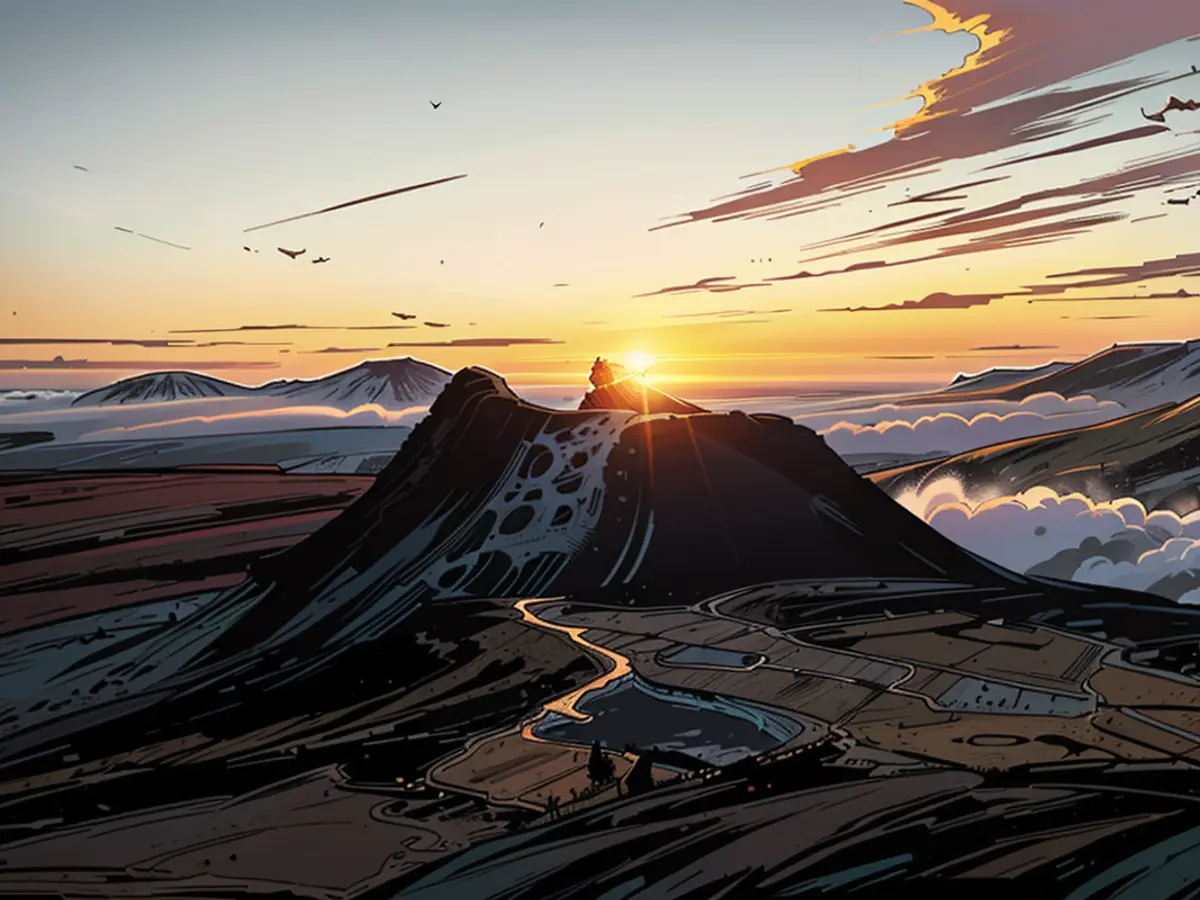Study - Volcanic eruptions in Iceland could last for decades
The latest volcanic eruptions in Iceland could last for decades, according to researchers. The most densely populated region of the country and crucial infrastructure may be threatened for a long time, as indicated in a study published in the journal "Terra Nova" on a Wednesday.
The eruption series began in 2021 on the Reykjanes Peninsula in southwestern Iceland, about 55 kilometers southwest of the capital Reykjavik. Since December of the previous year, there have been five major volcanic eruptions. Lava flowed from long cracks in the earth, making this type of eruption known as a fissure eruption. Several houses were engulfed by lava.
The affected region is relatively densely populated
A large portion of the population of the North Atlantic island lives in the affected region. Additionally, there is the only international airport and several geothermal power plants, which provide hot water and electricity for the country. The peninsula had been volcanically inactive for nearly 800 years, according to the study.
For their research, scientists analyzed seismic data from the past three years and took lava samples from various locations. They compared the liquid rock that flowed from different parts of the earth based on its chemical and physical properties. Their goal was to determine if it came from the same magma chamber underground or different chambers.
The petrological properties of the magma
According to the research, it is magma with similar petrological properties. This suggests a connected underground magma system, the scientists write. With the seismic data, they conclude that it is a moderately large magma accumulation at a depth of approximately nine to eleven kilometers, spanning a width of ten kilometers. It formed between the years 2002 and 2020.
The research team concludes that the current eruption series could be the beginning of a long episode. However, they cannot predict how long the series will actually last. "Nature is never regular," said co-author Ilya Bindeman, a vulcanologist and professor of geosciences at the University of Oregon in the US. "We don't know how long and how frequently it will last in the next ten or even hundred years. A pattern will emerge, but nature always shows exceptions and irregularities."
Iceland lies on the Mid-Atlantic Ridge, the tectonic plate boundary where the North American and Eurasian plates are pulling apart. Due to this, volcanic eruptions occur frequently in Iceland, but the eruptions of central volcanoes usually last only a few days or weeks, like the 2010 eruption of the Eyjafjallajökull volcanic glacier. Fissure eruptions, however, can last much longer.
- The study published in "Terra Nova" suggests that the current volcanic eruption series in Iceland, originating from the Reykjanes Peninsula, could continue for decades.
- The affected region in southwestern Iceland is home to a significant portion of the country's population, including the only international airport and several geothermal power plants.
- The research team analyzed seismic data and lava samples to determine if the petrological properties of the magma indicated a single magma chamber or multiple chambers beneath the surface.
- The results of the study suggest that the magma responsible for the eruptions has similar properties, pointing towards a connected underground magma system.
- While the research team can't predict the exact duration of the current volcanic eruption series, they believe it could be the start of a long-term episode, akin to the extended fissure eruptions commonly seen in Iceland.
- Iceland's location on the Mid-Atlantic Ridge, a tectonic plate boundary, makes it prone to frequent volcanic eruptions, but these events can vary significantly in duration, with central volcano eruptions typically lasting a few days or weeks and fissure eruptions, like the current series, potentially lasting for decades.







